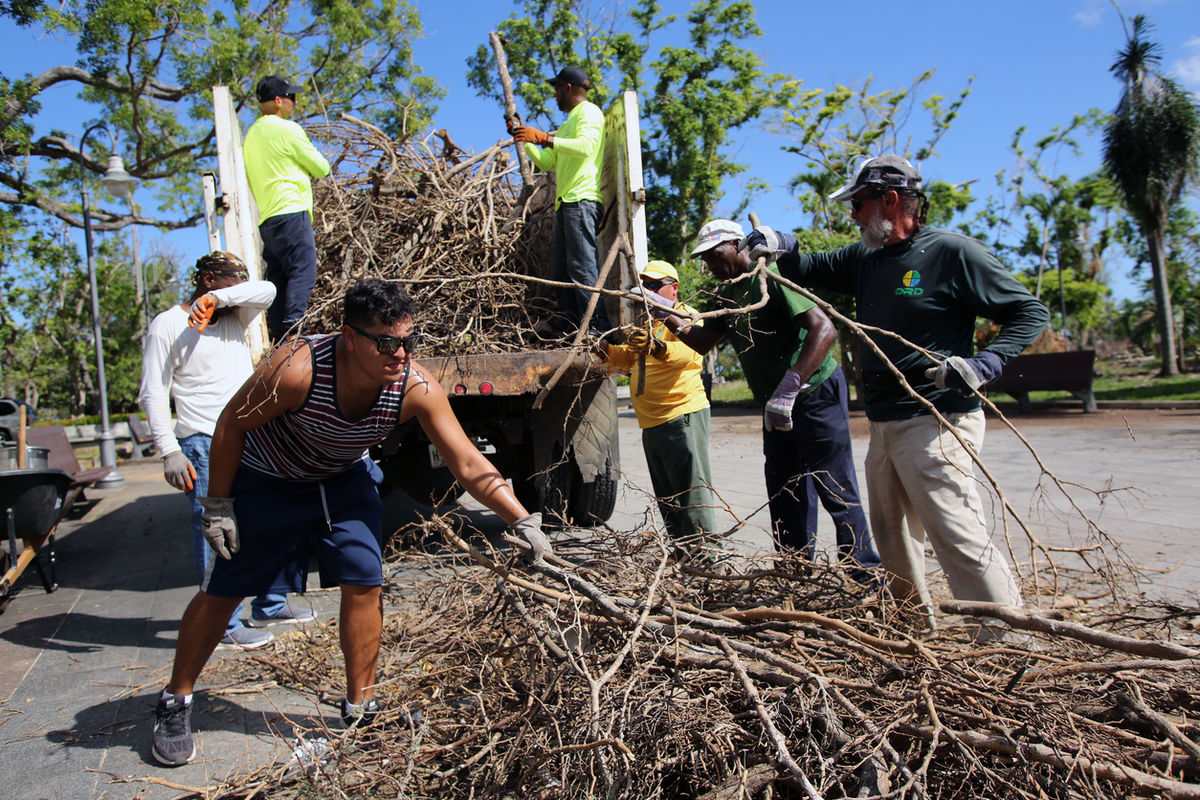By many measures, 2017 was a record-breaking year for natural disasters in the U.S. According to the National Oceanic and Atmospheric Administration, cumulative losses from the 16 largest crises reached $306 billion, surpassing the previous annual record of $215 billion, which was set in the wake of Hurricane Katrina in 2005.
Unfortunately, these serious economic losses are accompanied by many stories of lives disrupted—and experts fear that this increased frequency and intensity of disasters may become the new normal. As communities from Miami to Mendocino continue to grapple with the repercussions, it is worth reflecting on how we, the philanthropic community, can best support their recovery.
At the Conrad N. Hilton Foundation, we have a history of funding local community foundations in the wake of disasters. This approach dates back to an early grant awarded to the Greater New Orleans Foundation after Hurricane Katrina, and carries through to this year in which we awarded grants to three community foundations responding to major natural disasters.
Why do we direct our funds this way in times of crisis? It stems from our belief in investing in local communities.
Existing knowledge and proximity
Due to their focus on specific geographic areas, community foundations have a deep understanding of the needs of those impacted by a disaster. Their role at the center of charitable giving for the community ensures that they are aware of what pressing issues existed before a crisis, as well as what assets can be called on to strengthen the response. This insider knowledge is critical to informed giving, ensuring that funding not only goes to those who need it most but also comes in a form that is most useful to the recipients. This often includes building the capacity of local grassroots organizations, which community foundations are well positioned to identify, improving the area’s resiliency over the long-term.
After Puerto Rico was pummeled by multiple major storms this season, most notably Hurricane Maria, the Hilton Foundation turned to the Puerto Rico Community Foundation (PRCF) to provide insight into, and invest in, the restoration and revitalization efforts. Founded in 1985, PRCF funds programs in every region of the island to address education, housing, economic development and community building. Its hurricane renewal plan reflects a unique, local lens and includes plans to invest in developing the island’s food and water independence through recovery grants to micro-enterprises.

Network of local partnerships
From the moment a crisis occurs through the last stages of recovery, relationships are critical to a successful response. Community foundations, again because of their role at the center of community giving, have experience working closely with local implementing agencies and can leverage their existing relationships to improve response efficiency. They also often have the knowledge and credibility to play the critical role of convening and coordinating a variety of stakeholders. This is crucial in emergency settings to ensure that efforts are not duplicated, information is shared widely, and the most pressing needs are prioritized.
When Northern California was hit by a dramatic series of wildfires in October 2017, the 245,000-acre burn affected several counties. The Hilton Foundation turned to the Silicon Valley Community Foundation (SVCF), which has a long history of disaster response, and had emerged to help coordinate among the many partners that wanted to help. In a unique collaborative effort, SVCF established The Northern California Wildfire Fund to redistribute its donations to three local community foundations (Napa, Mendocino and Sonoma) based on need. The Fire Fund leaders were able to convene decision makers from both the nonprofit sector as well as local government to assess urgent needs, identify short-term gaps and gather information to inform long-term recovery efforts.
Long-term “staying” power
The impact of a disaster persists long after it has left the headlines, well beyond the frenzy of immediate relief agencies and visiting volunteers has subsided. In most cases, recovery takes years and community foundations, with their deep roots, will be present through every stage of this process. These organizations are well positioned to fund thoughtful long-term recovery and resiliency work since they permanently reside in affected areas. Their role as a leader in the community and the transparency by which they conduct business provide incentives to responsibly invest in programming that will have an enduring impact. Lessons learned from one crisis are internalized by community foundations, and can be used to inform future response efforts as well as prevention and preparedness programs.
After devastating flooding from Hurricane Harvey occurred in the Houston area, Mayor Sylvester Turner established the Hurricane Harvey Relief Fund, to be administered by the Greater Houston Community Foundation (GHCF). The Fund, to which the Hilton Foundation contributed, raised more than $112 million dollars in donations and benefits from GHCF’s experience responding to storms and massive flooding events over the past two decades. It also benefits from the long-term perspective that GHCF has developed through its investment the community, ensuring that its support for local partners will continue long after many national relief organizations have moved on.
At the Hilton Foundation, we believe in empowering those already embedded within the local community to create collaborative and long-lasting recovery efforts. Through these partnerships with local community foundations, it is our hope that the most pressing community needs are addressed not only at the start of a natural disaster, but continuously throughout the recovery process.